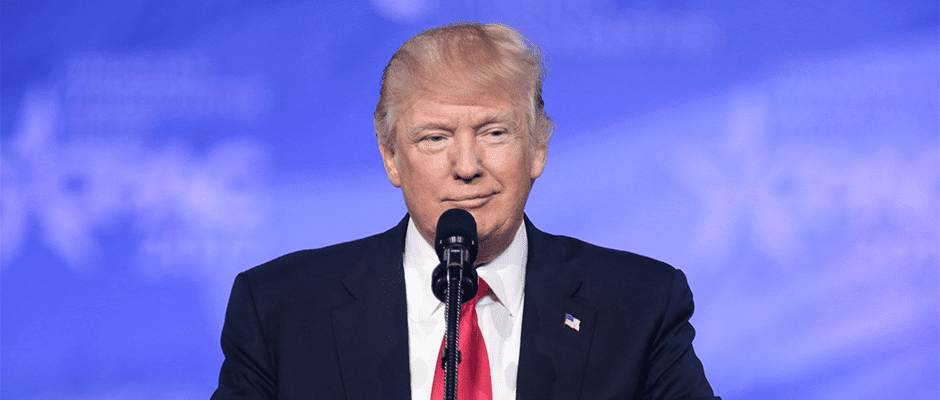Share this article
Trump administration releases 2018 budget blueprint
On Mar. 16, the White House released the President’s budget blueprint, which gives a preliminary outline of the proposed topline budget for fiscal year 2018 (FY18). In keeping with the administration’s resolve to heavily reduce government spending, deep cuts were seen across non-defense budgets, including the proposed elimination of some programs altogether.
In the “America First” Budget, President Trump states, “There is a $54 billion increase in defense spending in 2018 that is offset by targeted reduction elsewhere. This defense funding is vital to rebuilding and preparing our Armed Forces for the future.”
Agency and department heads, like Environmental Protection Agency Administrator Scott Pruitt and Interior Secretary Ryan Zinke, vowed to fight for their respective budgets, but ultimately received larger proposed cuts than originally expected.
Department of the Interior
At the Department of Interior, targeted reductions are reflected by a 12 percent decrease from FY17 funding levels. Further, the proposed budget would refocus DOI spending toward energy development programs.
The budget proposed an up to 15 percent cut for the U.S.Geological Survey. The budget would prioritize USGS essential science programs — including funding for the Landsat 9 ground system and research and data collection to inform sustainable energy development. The USGS Coalition has requested USGS funding levels of $1.2 billion for FY18 and at least $1.08 billion for FY17. USGS was funded at $1.1 billion in FY16 and the FY17 continuing resolution.
The proposed budget did not mention specific funding levels for the U.S. Fish and Wildlife Service, National Park Service, or Bureau of Land Management, but stated its support for stewardship capacity for land management operations. Funding for federal land acquisition was reduced by more than $120 million which could limit funding for programs like the Land and Water Conservation Fund.
On Mar. 21, a group of Senate Democrats sent a letter to the administration urging Trump to reconsider the proposed cuts to Interior and to revisit infrastructure promises made during his campaign.
Also included in Department of the Interior, Environment, and Related Agencies Appropriations bill is funding for the U.S. Forest Service (an agency within the U.S. Department of Agriculture). The proposed budget would fund wildland fire preparedness and suppression activities at the 10-year average level of $2.4 billion while reducing funding for National Forest System activities, including major federal land acquisition.
Department of Agriculture
The USDA has seen a proposed decrease of $4.7 billion, or 21 percent. Senator Debbie Stabenow (D-MI), Ranking Member of the U.S. Senate Committee on Agriculture, Nutrition, & Forestry, released a statement last week opposing these cuts to the budget and pointing to concerns for negative impacts on voluntary conservation efforts on farmland. The proposed budget may also hinder efforts to expand programs, like Conservation Reserve Program lands, under the 2018 Farm Bill. A reduction in funding for staff at service centers would limit the agency’s ability to effectively administer programs like those provided through the Natural Resources Conservation Service.
Environmental Protection Agency
The Environmental Protection Agency’s funding was reduced by 31 percent in the proposed budget. This cut would eliminate funding for regional efforts like the Great Lakes Restoration Initiative (GLRI) and cleanup of the Chesapeake Bay. The GLRI is a bipartisan effort to protect and restore the Great Lakes region. Part of the major focus of the GLRI Action Plan is the prevention and control of invasive species as well as restoration of habitat to protect native species. During a recent hearing discussing innovative control of invasive species, the Great Lakes Fishery Commission Chairman David Ullrich and Senator Tammy Duckworth (D-IL) stressed the importance of funding initiatives in the Great Lakes Region. Ullrich believed that loss of funding would have devastating effects.
Climate Funding
Climate change is not a priority outlined in the proposed budget. In reference to climate change-related programs, Office of Management and Budget Director Mick Mulvaney recently stated, “We are not spending money on that anymore. We consider that to be a waste of your money to go out and do that.”
The proposed budget would follow through on previous discussions to stop U.S. funding to United Nations climate change programs. The U.S. would also discontinue funding to the Green Climate Fund and Climate Investment Funds, thereby eliminating the Global Climate Change Initiative. Funding for efforts like the Clean Power Plan, international climate change programs, and climate change research and partnership programs would also cease in FY18 under the proposed budget.
Initial Reactions
While this is not the final budget for FY18, several members of Congress and other organizations have expressed their initial reactions to the proposed cuts. Both Republicans and Democrats see a need for major negotiations before Congress approves a budget.
In a statement, House Agriculture Chairman K. Michael Conaway (R-TX) discussed the important work of farmers and ranchers, saying, “Agriculture has done more than its fair share. The bottom line is this is the start of a longer, larger process. It is a proposal, not THE budget.”
House Committee on Appropriations Chairman Rodney Frelinghuysen (R-NJ) reiterated the power of Congress in the federal budget process, “As directed under the Constitution, Congress has the power of the purse.”
Organizations, like the Ecological Society of America, have created streamlined methods to stay up-to-date as the federal budgeting process progresses and to help put the impacts on conservation funding into context.
National Wildlife Federation President and CEO Collin O’Mara released a statement saying, “The massive cuts outlined in this budget would be the opposite of what scientists say is needed to reverse America’s wildlife decline.”
Learn more about the U.S. Federal Budgeting Process in Section 5 of TWS’ Policy Toolkit.
Header Image: ©Gage Skidmore








